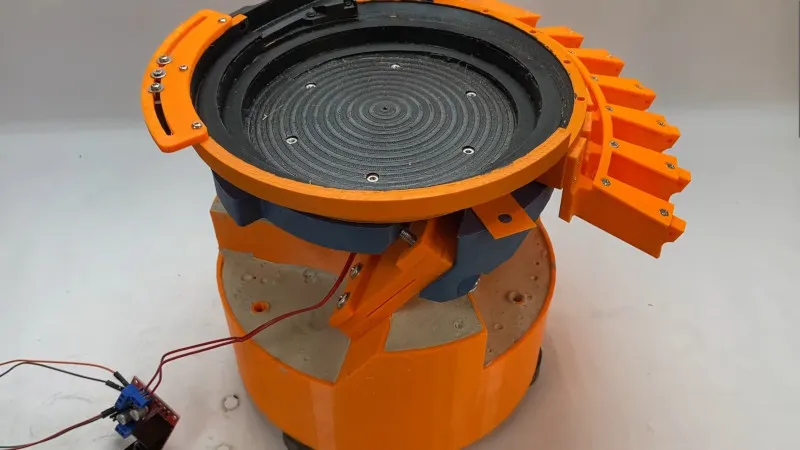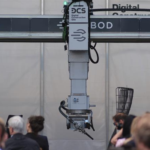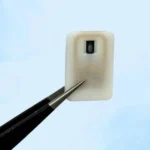As a manufacturing engineer with some background in automated industrial processes, it is pleasing to see that someone has turned their additive manufacturing skills into developing a staple of automated manufacturing – the vibratory feeder.
This ingenious contraption can take a random pile of components and magically transform them into an orderly, single-file procession. Additional features (such as wipers) can help to orient the parts further. A basic vibratory feeder accomplishes this feat through a precise shaking motion, coaxing the fasteners to align themselves along a spiral track leading to a dispenser.

The core of this vibrating bowl feeder, designed by engineer “Fraens”, comprises a weighted base and an upper bowl mounted on three strategically angled springs. Sandwiched between them is an electromagnet responsible for generating the vibrations. Driving the electromagnet requires a sine wave, produced by an Arduino and delivered as PWM through an H-bridge. However, the real artistry lies in finding the perfect balance between force, frequency, and spring stiffness. They make look like simple machines, and to an extent, they are, but there are quite a few engineering calculations lying beneath the surface of what makes a vibratory feeder system work effectively.
In the video above you can see the numerous test prints and iterations undertaken to achieve the flawless final result. The culmination of his efforts is a captivating sequence where various objects elegantly march along the spiral track—a spectacle that exudes pure satisfaction for a job well done.
Source: hackaday.com
Come and let us know your thoughts on our Facebook, Twitter, and LinkedIn pages, and don’t forget to sign up for our weekly additive manufacturing newsletter to get all the latest stories delivered right to your inbox.









